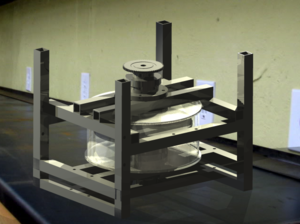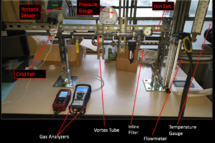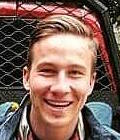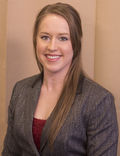|
|
|
|
| Simplified Disk Model
|
| Sponsor
|
|
| Team Name
|
Centri-Clean
|
| Duration
|
Fall 2015 - Summer 2016
|
| Faculty Advisers
|
|
| Mentor
|
|
| Students
|
- Josie Flerchinger
- Garrett Hall
- Travis Soderquist
|
The project goal of the CO2 Scrubber is to demonstrate mechanical separation of the components of flue gas based on molecular weight with the ability to be applied to an industrial scale.
Volatile organic compounds (VOCs) in flue gas cause many risks for health and environmental concerns. Manufacturers must pay for costly technology that has a high energy and water usage to reduce their current emissions. An effective and low cost way to separate out these harmful compounds is needed for the manufacturing market. The idea behind the counterflow disk method is the heavier, harmful gases will be separated from the lighter, non harmful phases, allowing for the extraction of the harmful phases.
- Amine Scrubbing which uses liquid solutions to remove CO2 and H2S
- Mineral and zeolite treatment to reversibly bind CO2
- Various other chemical treatments
- Perform fundamental studies on simplified geometry will be conducted to elucidate the minimum g force needed to effectively separate two gases.
- Run CFD simulations for a model that is similar to Xing JHD 2014
- Build and test a simplified model, with variables of disk speed, gap size, temperature, pressure, and type of gas.
- Provide proof of concept
| Specific Requirements |
Description |
Target Value |
Acceptable Performance
|
| Fundamental Studies
|
Simplified designs of the product
|
Reveal the minimum g-force needed
|
Test designs for fundamental studies and identify the best design
|
| Simulations
|
Run CFD simulations for a model similar to Xing JHD 2014
|
Reveal the minimum g-force needed
|
Test designs for fundamental studies and identify the best design
|
| Experiments
|
Build and test a simplified processor model similar to Xing JHD 2014 using conditions identified in simulations above
|
Measurements to confirm the CFD simulations
|
Verify if a pure mechanical force is sufficient to separate two gases.
|
| Testing
|
Testing of Vorsana prototype
|
Test maximum performance of disk speed, gap size, temperature, pressure and type of gas using flue gas from Energy Plant and additional testing in Vorsana Lab
|
Test maximum performance of disk speed, gap size, temperature, pressure and type of gas using flue gas from Energy Plant
|
Alternative Testing Designs[edit | edit source]
| Simplified Disk |
Description |
Simplified Disk Cross Section
|
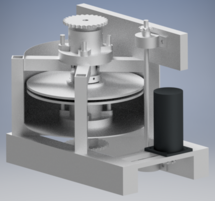 Alternative Simplified Disk Design |
- A simplified disk model similar to the model that the Computational Fluid Dynamics (CFD) simulations were performed on.
- The simplified disk design is similar to Vorsana's design, but simplified to allow for easier manufacturing.
- The gas that contains both phases is going to enter through the base, where the gas will hug the bottom disk. Once against the disk, the gas will flow towards the entrance between the counter rotating impellers where the vortexes required for separation will be formed. The outside of the vortex will contain the heavier phases, and will be thrown out from between the impellers to the outside where a port will extract it. the lighter phases will move back in towards the center of the impellers where it will be extracted.
|
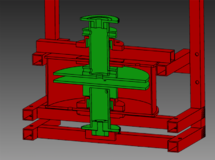 Simplified Disk Cross Section |
| Vortex Tube |
Description |
Vortex Tube Test Setup
|
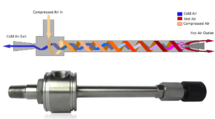 Off The Shelf Vortex Tube |
- The purpose of the vortex tube is to attempt to create a proof of concept for the ability to separate CO2 from the flue gas.
- The team purchased the vortex tube from the company AirTX, and if successful the team will be able to determine what forces are going to be needed for the simplified disk design and Vorsana's prototype.
- The team tested the vortex tube but no visible separation of CO2 was seen. This can be attributed to the limited precision of the gas analyzer used.
- Research shows that separation with a vortex tube is possible, but the team was limited by factors such as too small of an air compressor.
|
|
| Picture |
Biography |
Discipline
|
|
Travis Soderquist
- Environmental Engineering Student
- Hometown: Idaho Falls, ID
- I am a senior undergraduate in Biological and Agricultural Engineering with an emphasis in Environmental Engineering. I am currently participating in an internship with the Industrial Assessment Center working in energy engineering. I plan on going into wastewater treatment in the future. My hobbies include fly fishing, skiing, and everything outdoors.
|
- BAE
|
|
Josie Flerchinger
- Agricultural Engineering Student
- Hometown: Clarkston, WA
- I am a senior undergraduate in Agricultural Engineering. My areas of interest include soil and water quality. I currently work for the Water Quality Lab at the University of Idaho and in the future I plan on obtaining a position where I am working to ensure the quality of our resources. My hobbies outside of school include: traveling, snowboarding, hiking and fitness.
|
- BAE
|
|
Garrett Hall
- Mechanical Engineering Student
- Hometown: Enumclaw, WA
- Hobbies/Interest: Professionally I enjoy problem solving and machine design with an emphasis on using solid modeling to aid in design. I have used these strengths outside of academics to design and patent a lead free fishing sinker that my wife and I are starting a business around. Outside of engineering, I coached the University of Idaho water polo team for four years, before handing it off to the next coach and stepping into an advisory role this year. In my spare time when I can get it, I enjoy fishing, inventing and billiards. Plan for the future: Currently I have a maintenance engineering position at The Dalles Dam, lined up for after graduation, with the US Army Corps of Engineers. As a maintenance engineer it is my responsibility to decide when and how components of the dam should be repaired or replaced. However if another position that allowed for me design work were to present itself, I would likely accept it.
|
- ME
|
